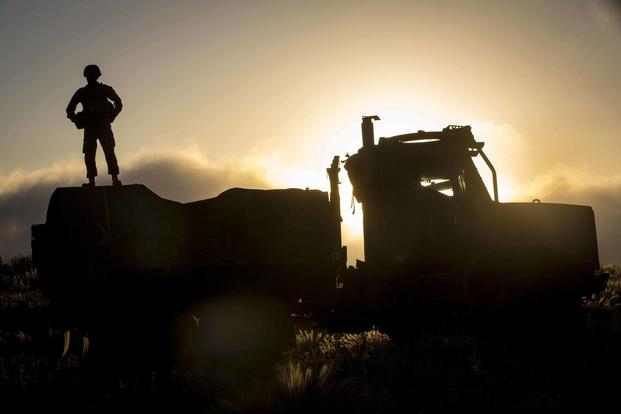The Marine Corps is hoping to squeeze another two decades of service out of its tactical workhorse truck with a series of upgrades ranging from updating the cab design to improving the fuel efficiency.
The Medium Tactical Vehicle Replacement, a truck also known as MTVR or 7-ton, entered service in 2001 and has since been the Corps' go-to vehicle for hauling supplies, as well as towing combat systems such as the High Mobility Artillery Rocket System and the M777 lightweight 155mm Howitzer.
"The MTVR was originally designed to have an item exit date of 2024," said Walter Kelley, project officer for the MTVR Technology Demonstrator at Program Executive Officer Land Systems, in a recent Marine Corps press release.
"But being the platform that it is -- a robust, good, solid performer -- Marine Corps leadership decided to make it last roughly another 20 years," he said.
Working with the National Advanced Mobility Consortium (NAMC), Kelley's team has been trying to improve the maintainability of the MTVR to cut down on the frequency it needs repairs to make it more available when it's needed.
NAMC is a nationwide alliance of organizations involved in the translational research and development of prototype, ground vehicle and robotic systems and technologies, the release states.
The effort has so far yielded the Lightweight Cab Initiative, an effort that involves updating the cab with removable armor and a "space frame architecture, further increasing passenger survivability during a rollover event," according to the release.
The program office found that, by decreasing the weight of the cab, they were also able to increase the MTVR's fuel efficiency.
"If we can save 10 to 20 percent in fuel economy, that's millions of dollars in fuel that could be saved with the same number of trucks going the same distances, doing the same stuff, just using less fuel," Kelley said.
In addition, NAMC plans to modify an existing MTVR into a technology demonstrator that leverages known technologies into a single vehicle to demonstrate how these upgrades can be integrated into the MTVR fleet, the release states.
Specifically, the program team wants NAMC to modify an existing MTVR to integrate a lightweight modular cab with increased space for personnel and on-board equipment, a more fuel-efficient powertrain, added electronic stability control, increased data bus security and occupant survivability, according to the release.
"The outcome of this is getting an integrated truck, meeting the requirements of this technology demonstrator, and taking it to leadership," Kelley said. "Leadership can then pick and choose what features will best support Marines or whether it would be worth going after a brand-new truck."
-- Matthew Cox can be reached at matthew.cox@military.com.










